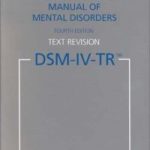Mental health articles
OF mental health care and mentally ill
panic disorder diagnosis dsm iv
panic disorder diagnosis dsm iv
Diagnosis
In its original conceptualization, agoraphobia was seen as a fear of external situations such as a marketplace. Consequently, much attention has been focused on the phobic (behavioral) aspects of agoraphobia over the years. Before the publication of DSM-III, panic attacks were largely ignored, although panic disorder existed under a wide range of names (including anxiety neurosis, neurocirculatory asthenia, effort syndrome, soldier’s heart, irritable heart, etc.;). With the publication of the DSM-III-R it was officially acknowledged that agoraphobia and panic attacks were most often manifestations of the same disorder (panic disorder with agoraphobia). With publication of the DSMIV, it was officially recognized that panic attacks could occur across a number of anxiety disorders.
According to the DSM-IV, a panic attack involves a discrete period of fear or anxiety accompanied by a number of physiological and cognitive symptoms. There is some discussion about the actual number of symptoms necessary to constitute a panic attack: DSM-IV requires four or more symptoms at the same time. However, it has been found that patients themselves do not distinguish attacks with more than four symptoms from attacks with less than four. A diagnosis of panic disorder requires that the individual experience recurrent panic attacks and worries about the next possible panic attack or consequences of the attack for at least 1 month. Importantly, for making a diagnosis of panic disorder, the individual must experience attacks that are unexpected or appear to be ‘‘out of the blue.’’ In addition to the attacks, these individuals may display a range of phobic avoidance from no avoidance at all (panic disorder without agoraphobia) to being almost totally housebound (panic disorder with extensive agoraphobic avoidance).
Panic disorder is a very recognizable disorder, and studies of diagnostic reliability have generally indicated good agreement among raters; kappas range from .72 to .81. Generally, agreement is slightly better for subjects with more extensive avoidance (agoraphobia) than for those with less avoidance (panic disorder).
Post Footer automatically generated by wp-posturl plugin for wordpress.







Leave a Reply